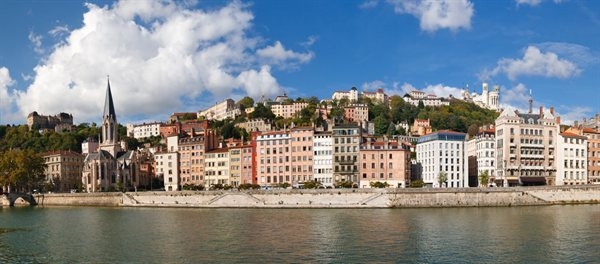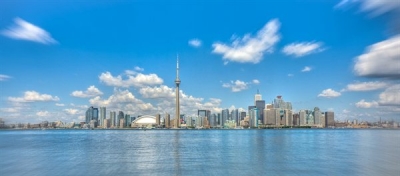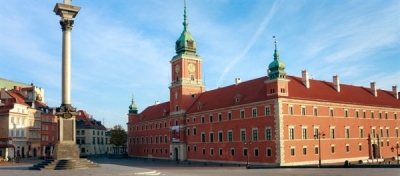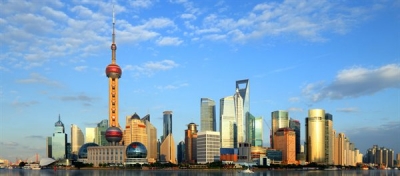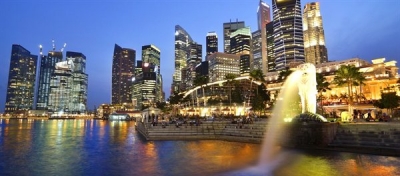
Destinations (63)
Athens has lived his greatness was in 400 BC, when it was built the most monuments. During the era turcobizantina the city was deprived of its importance until 1833, when Athens became the capital of liberated Greece.
On the occasion of the 2004 Olympics have been modernized almost all the infrastructure, the underground and trams, and made new connections and bridges in order to alleviate the huge influx of traffic.
Athens is still very chaotic - otherwise it would be Athens, "to know the city, you have to get lose," is a saying here. The streets, almost all one-way, make the fluid circulation, but complex and error is equivalent to revolve around one or more blocks to return the right direction.
Athens is probably the capital in Europe has undergone major changes over the past years. Although Athens has become a modern metropolis can give the feeling of a small town.
Here the past meets the future and the ancient monuments are the stage for a city of trend.
It is these contrasts make this a great city so interesting to explore.
Lyon is the capital of the department of the Rhone.
E 'divided into zones by the river Rhone and the Saone River and two hills, La Croix-Rousse and Fourvière.
Has an old town - Vieux Lyon, Fourvière, Saint Jean - and a more commercial center, the Place des terreaux, Place Bellecour and Rue de la République on the peninsula between the Rhone and Saone.
Lyon is famous for being the gastronomic capital of France.
Toronto, located northeast of Lake Ontario, is the largest city in Canada, which is also the financial center. With an urban population of over 2.5 million inhabitants and a metropolitan area of over six million, is a truly multicultural city, with half of the inhabitants were born abroad. In Toronto there are 150 different ethnic groups from all continents and, although English is the official language, inside you can hear people speaking over 100 different languages.
For the high quality of life and low crime, Toronto is one of the favorite destinations for foreigners to attend English classes or studying in its universities. Here you can climb the tallest structure in the world, the CN Tower, also known as the Tower of Toronto, which offers breathtaking views from 553 meters.
Warsaw today is a city reborn in morals, thanks to the end of the dreary socialist realism. Despite the appearance a little 'severe, is a young city that wants to live, but do not want to lose her memories. E ', in short, a true reflection of the new Poland.
The original is Stare Miasto, built towards the end of the thirteenth century around the first castle of the Dukes of Masovia. Razed to the ground by the Germans in 1944, a meticulous reconstruction has lovingly reconstructed the old forms in the Castle Square (Plac Zamkowy) and the rectangular Market Square (Rynek), now surrounded by colorful houses that are home to restaurants, bookstores, bakeries, museums, coffee, busy especially during the summer from vendors, painters and tourists.
The city tour can not neglect the Citadel, a fortress prison erected by Tsar Nicholas in 1832, the district Muranow, with the monument to the heroes of the ghetto (the Jews exterminated in Warsaw were 350 000) and the actual route, the Castle to Lazienki park, palaces, churches and monuments.
What to visit
The Royal Castle (Zamek Krolewski), the Cathedral of St. John the Baptist, Ulica Dluga (the long way) of neoclassical appearance, the Cytadela Zoliborz on the hill, the Palac Zamoyskich (the blue building), the Museum Kolkcij Jana Pawia II, the paintings donated by Pope John Paul II.
They called it the "Paris of the East" in 1920 was a city of adventurers, gamblers, opium smokers, prostitutes, some dandies' debauched, gangsters, millionaires, child slaves forced to work for a handful of rice, missionaries.
Then here was founded the Chinese Communist Party, Mao put the basics of the Cultural Revolution, here were the bloody repression of Chiang Kai Shek, the Japanese occupation and the development of the dominance of the "Gang of Four".
Shanghai, for better or for worse, has always been a city laboratory, the hinge between China and the West, and remains so to this day, joining the Communist Party and the market economy, consumerism and political orthodoxy.
Shanghai is huge, with an intense traffic of cars and millions of bicycles, and has remained a unique cosmopolitan city, where you can feel the echoes of the past and you can see that China will be among the palaces of glass and signs lucicanti.
The Bund is the river (it is crossed by the Shanghai Huangpu), flanked by original buildings of foreigners, including the Peace Hotel, remained the same from the thirties, with an orchestra of elderly musicians playing (good) jazz of yesteryear.
Departs from the Bund Nanjing Lu, the most famous shopping street in China (you can find anything, also call it the Golden Mile. American way).
What to visit
The Shanghai Museum (bronzes, ceramics, paintings of incomparable beauty), the Garden of the Mandarin, the famous tea room Huxingting and the Temple of the Jade Buddha, the former French Concession with Huaihai Lu, the best place to shop; the tomb of the writer Lu Xun.
Everything works like clockwork, the streets are clean, orderly traffic, police inflexible with those dirty or makes noise. It is not Switzerland, Singapore, an island city-state in South-East Asia (in fact a main island and 55 smaller) and one of the economic tigers of Asia.
E 'connected in the north to the Malay Peninsula by a bridge; goes south, with smaller islands, towards Malacca.
It 'a real ethnic mix: Chinese, Malaysian, Indian, and then Armenians, Arabs, Indonesians and Europeans.
The port is the second in the world after Rotterdam, the financial market represents 24 percent of the country. The skyscrapers of glass block stand out the names of all the major multinationals.
But tourism is a respectable item in the budget of the country.
Old Times is the oldest part, built by the founder of Singapore, Sir Stamford Raffles, who bought the land in 1819 by the Sultan of Johore and did design and build to the north the city of business, strictly English. The buildings are all in Victorian style and Palladian.
The Chinatown is the cultural heart of Singapore and is full of restaurants and shops. Arab Street is famous for its batik fabric shops, for straw baskets and jewelery craftsmanship.
Little India is colorful and smells of spices: the main market is called Zhujiao Centre. Orchard Road is the major hotels and shopping centers.
The Sister's Island are great for divers, with their coral reef.
The Butik Timah Nature Reserve is the largest area where the rainforest to survive.
The modern history of Sydney, the main cities of Australia begins with the landing of James Cook in 1770 by the legendary "Endeavour" and the arrival of the first European settlers, especially at the beginning deported from English prisons, even if they lived here already for centuries the aboriginal tribes.
Rich in culture, entertainment and picturesque nature, Sydney is the ideal destination for a trip asks everything from the excitement of surfing walks between koalas and kangaroos in the many city parks, museums of world importance such as 'Australian Museum and the Museum of Contemporary Art, the picturesque view of the harbor and the famous Opera House to the fun of a multicultural city that lives 24 hours 24.
Cape Town is the legislative capital of South Africa and the oldest city in the country, founded in 1652 on the shores of the Cape of Good Hope as a supply point for the ships of the Dutch East India Company. Historically it was also the first European settlement in Africa.
Dominated by the majestic Table Mountain, from whose flat top you can enjoy a splendid view (you can also go by cable car), the peninsula has the most beautiful beaches of South Africa (above all, Clifton and Camps Bay) and lush vegetation.
Cape Town is an intriguing mix of Europe and Africa, but it has its own identity. In recent years there has been a great development of tourism and trade, which saw the birth of the Waterfront, the lively harbor area, completely renovated and became the hub of city life.
The most popular time for visitors is the summer, from October to March, from August to November, you can spot whales and dolphins up close.
What to visit
The Castle of Good Hope was built in 1666 and is one of the oldest European fort in Africa.
The South African Museum has reconstructions of dinosaurs and a large collection of natural history.
The area of the Victoria and Alfred Waterfront (with a new aquarium) is a tourist attraction irresistible.
The main districts of Cape Town (information from Wikipedia, under Cape Town):
Adderley: on this road, which passes through the upper part of the city from north to south, through the botanical gardens Company's Gardens, overlooking most of the museums and many historical buildings.
Central: the area of the Central develops around St. George's Mall and is full of shopping malls and offices.
Bo-Kaap: the Bo-Kaap Malay Quarter, which stretches from the slopes of Signal Hill, is characterized by a number of mosques and low houses of the early nineteenth century, painted in bright colors.
Waterfront: the dock of the Victoria & Alfred Waterfront is one of the most popular tourist destinations of the city, there is a maritime museum and the Two Oceans Aquarium, where you can admire the marine life of the Atlantic and Indian Oceans.
Observatory: Located in the south of the city, this district is the cultural heart of Cape Town, frequented by artists and students. It is close to campuses Groote Schurr, where Barnard carried out the first heart transplant in the world.
Kirstenbosch: Kirstenbosch Botanical Gardens, located on the east side of Table Mountain, is a green area of 530 hectares. In this garden are cultivated almost 10,000 species of plants.
Constantia is the most exclusive area of the city. Alternate villas (some of which are added to the museum) and vineyards.
The township: are the poor neighborhoods where they live the blacks remained at the margins of society. The townships of Cape Town is located in the area of the Cape Flats. Khayelitsha, Guguletu, Mitchell's Plain, Athlone and Atlantis are the suburbs where there are public housing and elsewhere in the Flats extend the so-called squatter camps, the slum
Capital of Norway, the Court residence and seat of government, enjoys a wonderful location in the Oslofjord, which opens the Skagerrak over a length of 100 km, free throughout the year by ice.
The town is surrounded by green hills, lakes and forests, inhabited by animals and colorful flowers.
Oslo collects about 13% of the Norwegian population and, in addition to the large port, includes mechanical engineering and shipbuilding. The presence of academies, universities and several museums contribute to the vibrant cultural atmosphere of the city.
What to visit
Karl Johansgate, the Stortorget (the largest market), the Cathedral, the Studenterlunden, the Storting (Parliament), Nationaltheatret, the Radhus, the Universitet (the Aula Magna painted by Munch), the SlottParken, the Konige Slott (the Royal Palace), Old Aker Kirke, Frognrparken (one of the most beautiful parks in the whole of Scandinavia), Vikingskipene.
Several museums: Historik Museum, Nasjonalgalleriet (with masterpieces by Munch), Kunstindustrimuseet, Munch Museum.
Of ancient origin, Pisa was Roman naval base in the Middle Ages and the rich and powerful maritime republic.
An ally of the Normans in the conquest of Sicily, is the author of the First Crusade, which is the acquisition of commercial bases in the Mediterranean.
Ally of Barbarossa, gets in a feud Sardinia, Corsica and the coast from the mouth of the Magra to those dell'Albegna: the twelfth century is the period of its maximum splendor.
After his fleet is destroyed by the Genoese at the Battle of Meloria, falls into the hands of Florence and from that point follows the fate.
What to visit:
The Piazza del Duomo, or Field of Miracles, contains the monuments for which the city is famous all over the world, arising from a green lawn as if by magic: the Duomo, the Campanile, the Baptistery and the Cemetery. The Cathedral, the highest expression of the Romanesque-Pisan, was begun in 1064 and completed by 1118 by Buschetto by Rainald, with sloping façade crowned by four orders of loggias. The walls are decorated with mosaics, glazed tiles, plumes and roses, culminating at the top with the Madonna by Andrea Pisano. Inside, the pulpit by Giovanni Pisano (1311), in the center hangs the so-called ("lamp of Galileo"), in bronze, whose oscillations would have made sense to the scientist the isochronism of the pendulum. Not far away stands the bell tower, known worldwide as the leaning tower, tilted about 5 degrees, with six rows of loggias around the cylindrical structure. The tower was built from 1173, interrupted for a century for the land subsidence and completed in the mid-300. Opposite the cathedral, stands the majestic Baptistery from the lawn, started in 1152 by Diotislavi to be completed two centuries later. Inside, the famous pulpit by Nicola Pisano in 1260. The Cemetery is a rectangular building, with a porch that runs around the lawn, where in the eleventh century was laid the earth brought from Golgotha. It houses the tombs of prominent residents, as well as a collection of Roman and medieval sculptures, including the tombs of Tino Camaino and Andrea Guardi. In the square, the museum of the Opera del Duomo. To complete the knowledge of the '200 and '300 Pisa, visit the National Museum of S. Matthew, at the convent of the same name on the river bank. Crossed the river on the bridge of Middle, the oldest in the city, you come to the beautiful Piazza dei Cavalieri, the center of the republican city, with the building of the Caravan, the church of St. Stephen to the knights and the palace of the clock. Also worth seeing are the churches of S. Catherine, and St. Maria della Spina, a jewel of Romanesque-Gothic style with statues of Andrea and Nino Pisano.
More...
Capital of Bavaria, on a plateau overlooking the Bavarian Alps, situated on the left bank of the Isar, Munich traditionally knows how to live well, with an attitude very "southern" than other more severe cities in Germany.
So fun, Oktoberfest, rivers of beer, nightclubs, restaurants of all kinds, large parks, but also a lot of culture, art museums, art exhibitions and music festivals.
And, of course, many industries, which make Munich a rich city, as can be seen walking through the streets of downtown.
The historic core of the city, whose origins lie in the Middle Ages, is made from Marienplatz and the church of St. Peter, the oldest (XII century) parish, and the Neue Rathaus (1867), with its famous chimes with figures enamelled copper that every day at 11 mimic a tournament medieval and folk dances. Not far away, the Residenz Castle of the Dukes of Bavaria (XVI century), now converted into a museum.
Always in the center stands the Frauenkirche, Cathedral of Munich and Metro Bavaria, a late Gothic (1468-88) brick.
What to visit
Apart from the monuments already mentioned, the Deutsche Museum, the Theresienwiese park where we celebrate the beer festival, the Neue Pinakothek and Neue Staatgalerie (modern painting), the Bayerisches Nationalmuseum (Bavarian art), Antikensammulung (classical antiquity) and the 'Alte Pinakothek.
The "Milan to drink" of the '80s has probably eclipsed the beauty and attractions of Milan, in the twentieth century became the main economic and financial center of Italy, and the capital of fashion and design.
Forge new trends, Milan is a city with a long history: it was founded in the fifth century BC Insubri by a Celtic population, and is rich in historical monuments and buildings, such as the fabulous Cathedral and the Royal Palace. Also, do not miss the extraordinary cultural offer of Milan, from the works of the Teatro Alla Scala on, and all the fun that offers something for everyone.
Salzburg, situated in a wide valley with a mild climate, crossed by the Salzach River, at the northern edge of the eastern Alps at the Bavarian border, is the capital of the province of Salzburg.
From the three hills that surround it (the Moenchsberg, the Kapuzinerberg, the Rainberg) enjoy panoramic sea views.
Known throughout the world as the birthplace of the great Wolfgang Amadeus Mozart (1756-1791) is famous also for the musical and cultural events that take place each year.
The city has a beautiful old town in the Gothic and Baroque (Italian-inspired) was added to UNESCO's list of Historic Heritage of Humanity. The city's cathedral (Salzburger Dom) is the most shining example of this style.
The cultural and artistic splendor of Salzburg is due in large part to the interests of the prince-bishops who ruled the fate of the city between the sixteenth and seventeenth centuries.
What to visit
the Festung Hohensalzburg (Hohensalzburg Fortress): fort commissioned in 1077 by a bishop, now the largest intact fortress in Europe. E 'connected to the city by a funicular extremely characteristic.
Getreidegasse (Alley of Grains) with the birthplace of Mozart;
the Benedictine Convent of St. Peter;
Cemetery Petersfriedhof.
And again, the Residence and the Residence (Bishop's Palace), the Mozartmuseum, the Kapuzinerkloster, the Mirabell Palace.
Outside Innsbruck is a suburban palace, the Hellbrunn (Fontechiara), surrounded by formal gardens, fountains, water features and a zoo, active and much visited today.
The best known of the Canary Islands offers an enviable range of landscapes, climate and tourist attractions in the desert mountains alternating with tropical vegetation, steep cliffs and sandy beaches.
Gran Canaria has a configuration volcanic circular and conical: the center is the highest point, a symmetrical cone called Pozo de las Nievas.

